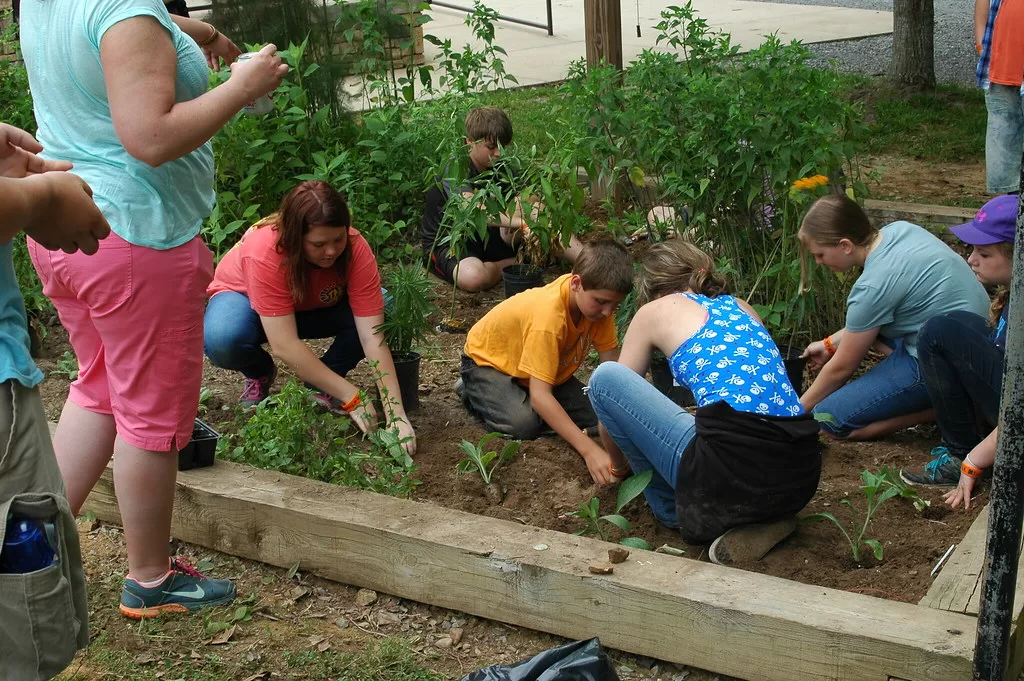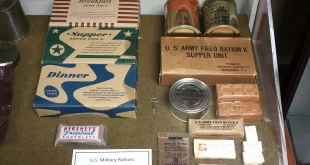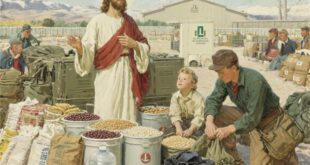When supply chains fail and grocery store shelves are bare, the ability to grow your own food is not just a hobby but a lifeline. Survival gardening gives you the power to provide for yourself and your family no matter what happens in the outside world. This is not about weekend gardening for fun or aesthetics. It is about building a sustainable and resilient food system right in your own backyard, one that can keep producing even when inflation spikes, trucks stop running, or political instability disrupts commerce. History has shown repeatedly, from the Great Depression to the World Wars, that those with the ability to produce their own food always fare better than those dependent on outside supply.
Modern grocery store convenience has made people forget that food production is a time intensive and skill based process. You cannot wait until the day you are hungry to start planting. Seeds need time to germinate, plants need care to grow, and soil needs proper conditioning long before you can expect a harvest. The earlier you start developing your gardening skills, the better prepared you will be when food becomes scarce or expensive. Waiting for a crisis to begin learning could mean going hungry during the most difficult months.
Preparedness experts agree that one of the most valuable investments you can make right now is in learning the basics of growing nutrient rich vegetables, fruits, and herbs. Not only will this provide you with a steady food supply, but it will also give you bartering power if neighbors or community members need fresh produce when supplies run low. Your garden becomes both a pantry and a source of trade in a world where the value of the dollar might be unstable.

Choosing the right crops for survival
When it comes to survival gardening, crop selection is critical. You want plants that provide high nutritional value, store well, and can grow in your specific climate. Staples like potatoes, beans, squash, carrots, and cabbage have been used for centuries because they are calorie dense, store for long periods without refrigeration, and are relatively easy to grow. Leafy greens like kale and spinach offer valuable vitamins and can be harvested continuously during the growing season, making them essential in preventing nutrient deficiencies.
Another smart choice is to plant perennial crops that return year after year without replanting. Asparagus, rhubarb, and certain berry bushes are excellent examples. Once established, they require minimal maintenance and will keep producing food for many years. Adding perennial crops to your garden ensures that even if you are unable to buy seeds in the future, you will still have food sources returning on their own each spring.
Do not forget to think about seed saving. Many hybrid seeds sold in stores are designed for single season use and will not produce reliable crops if replanted. Instead, focus on heirloom and open pollinated seeds, which can be saved and replanted year after year. Resources like the (Seed Savers Exchange) can connect you with heritage seeds that have been preserved for generations and are proven to thrive in a variety of conditions.
Building healthy soil for maximum yield
Your garden will only be as productive as the soil you plant in. Healthy soil is rich in organic matter, teeming with beneficial microorganisms, and balanced in nutrients. Without these conditions, plants will struggle, and yields will be poor. Start by testing your soil to understand its pH and nutrient profile. Many state universities offer affordable soil testing services through their agricultural extension programs. For example, the (University of Minnesota Soil Testing Laboratory) provides easy to follow instructions and detailed results that can guide your amendments.
Composting is the most effective way to improve soil health over time. By recycling kitchen scraps, grass clippings, and leaves into nutrient rich compost, you create a natural fertilizer that enhances water retention and supports plant growth. Composting also reduces household waste, making it an environmentally sustainable practice as well as a preparedness measure. Many survival gardeners maintain multiple compost piles to ensure a steady supply of finished compost throughout the year.
Mulching your garden beds helps regulate soil temperature, prevent moisture loss, and suppress weed growth. Materials like straw, wood chips, or shredded leaves can be spread around your plants to protect the soil and feed it as the mulch breaks down. This technique also reduces the need for constant watering, which is especially important in a crisis when water may be scarce or rationed.
Maximizing your growing space
Not everyone has acres of land to work with, but even small spaces can produce an impressive amount of food if used wisely. Raised beds, vertical gardening structures, and container planting allow you to grow food in tight urban or suburban environments. Crops like tomatoes, cucumbers, and pole beans thrive when trained upward, freeing up ground space for root crops and low growing vegetables.
Companion planting is another method that makes the most of limited space. This involves growing certain plants together because they benefit each other in growth or pest control. For example, planting basil alongside tomatoes can enhance flavor and repel insects, while beans fix nitrogen in the soil that benefits neighboring crops. The (Old Farmer’s Almanac Companion Planting Guide) is an excellent reference for planning these combinations.
Succession planting ensures that you are continually harvesting throughout the growing season. As soon as one crop finishes, another can be planted in its place. This keeps the garden producing food steadily instead of having everything ripen at once and then leaving empty beds for the rest of the year. Planning your planting schedule ahead of time makes this process much easier to manage.
Protecting your harvest
Producing food is only part of the battle. You also need to protect it from pests, disease, and theft. Fencing is often necessary to keep out deer, rabbits, and other animals. For smaller pests like insects, row covers and organic sprays can be effective. Neem oil, insecticidal soap, and diatomaceous earth are all natural options that can help control infestations without harmful chemicals. The (EPA Safe Pest Control resource) offers guidelines on eco friendly solutions that will not contaminate your soil or crops.
Preserving your harvest extends your food supply well beyond the growing season. Canning, dehydrating, fermenting, and freezing are all methods that allow you to store surplus produce for months or even years. The (National Center for Home Food Preservation) is a trusted source for safe and tested preservation methods. Having a variety of preservation techniques ensures that even if one method fails, you will still have other ways to store food.
Security is another concern in hard times. In a prolonged crisis, your garden may become a target for theft. Simple deterrents like motion lights, locked gates, and thorny perimeter plants can discourage would be raiders. Being discreet about the size and productivity of your garden can also help avoid unwanted attention. Sharing surplus with trusted neighbors may build goodwill and reduce the risk of conflict over resources.
Passing on the knowledge
One of the most important aspects of survival gardening is teaching others how to do it. Skills that are not passed on can be lost in a single generation. Involving children in planting, watering, and harvesting not only prepares them for future self reliance but also fosters a sense of responsibility and connection to the land. These skills are as important as reading or basic math when it comes to surviving in uncertain times.
Community gardens are another way to spread knowledge and increase local food security. By working together, neighbors can pool resources, share tools, and divide tasks, creating a stronger and more resilient network. Organizations like the (American Community Gardening Association) provide resources and support for starting and maintaining community gardens in urban, suburban, and rural areas.
Every seed you plant and every skill you learn adds to your ability to feed yourself without depending on fragile systems. The more you practice now, the smoother your transition will be when outside sources of food become unreliable. Survival gardening is not just about vegetables and soil. It is about independence, security, and peace of mind in a world where those things are increasingly rare.
| Question | Answer |
|---|---|
| What is survival gardening | It is a plan driven garden focused on reliable food production, seed saving, and preservation so a family can eat even when stores are empty. |
| When should I start | Begin now so you can learn your climate, build soil, and practice before you must rely on the harvest. |
| How much space feeds a family of four | A well managed plot of about two to four hundred square feet for staples plus containers for greens can provide a steady flow, and more space gives more security. |
| What beginner crops are most dependable | Potatoes, beans, peas, carrots, cabbage, onions, garlic, kale, chard, and zucchini are proven, forgiving, and nutrient rich. |
| Why choose heirloom or open pollinated seeds | They breed true so you can save seed each season and keep your garden going without new purchases. |
| How do I start saving seeds | Grow open pollinated varieties, let a few plants fully mature, dry the seed, label it clearly, and store it cool and dry. |
| How do I test and improve soil | Use a simple soil test to check pH and nutrients, then add finished compost, aged manure, and mineral amendments to reach balance. |
| What is the fastest way to build healthy soil | Layer compost, mulch heavily, keep beds covered with living plants, and avoid tilling that breaks soil life. |
| How deep should raised beds be | Ten to twelve inches is enough for most crops if the soil below drains well and is not compacted. |
| How can I grow a lot in a small yard | Use vertical supports for tomatoes, cucumbers, and pole beans, plant in containers, and practice succession planting. |
| What is companion planting | It is pairing crops that help each other, such as basil with tomatoes for flavor and pest pressure, or beans that add nitrogen for corn and squash. |
| How much should I water | Aim for about one inch per week from rain and irrigation, water deeply at the roots, and mulch to hold moisture. |
| What if the power goes out | Use gravity fed rain barrels, soaker hoses, and watering cans, and capture roof water to keep crops alive during outages. |
| How do I handle insects without harsh chemicals | Start with row covers, hand picking, traps, and targeted sprays like neem oil or insecticidal soap only when needed. |
| How do I extend the season | Use cold frames, low tunnels, and frost cloth, choose early and late varieties, and plant near sunny walls for warmth. |
| How do I stop deer and rabbits | Use fencing sized for the animal, add netting over beds, and plant a border of strong scents like garlic and rosemary. |
| How do I protect from theft in hard times | Keep the garden discreet, use simple gates and motion lights, and build trust by sharing surplus with reliable neighbors. |
| What crops give the most calories per square foot | Potatoes, winter squash, dry beans, sweet potatoes, and corn provide the best calorie return in most climates. |
| Which perennials should I plant | Asparagus, rhubarb, strawberries, raspberries, blackberries, and hardy herbs return each year with little effort. |
| What tools are essential | A sturdy digging fork, hand trowel, hoe, rake, pruning shears, gloves, a watering can, and a wheelbarrow will handle most work. |
| How do I plan succession planting | Group crops by days to maturity, replant beds as soon as a harvest finishes, and keep a simple calendar for sowing dates. |
| How do I preserve the harvest | Use canning for tomatoes and sauces, dehydrating for fruits and herbs, fermenting for cabbage and pickles, and freezing for greens and berries. |
| How long will stored seeds last | Most vegetable seeds keep two to five years when kept cool, dark, and dry, and some last longer with careful storage. |
| Can garden produce be used for barter | Yes, fresh food, preserved jars, and seeds trade well, and clear labeling and consistent quality build trust. |
 Survive Our Collapse Building Self-Reliance in an Uncertain World
Survive Our Collapse Building Self-Reliance in an Uncertain World





One comment
Pingback: Survival Gardening: Why Growing Food is the Ultimate Prepper Skill – Guardian Survival